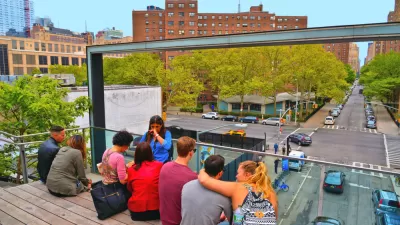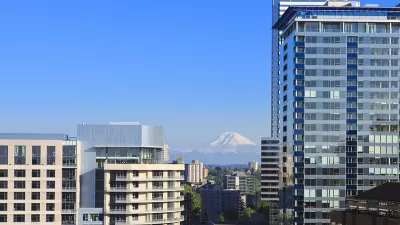The New York Times is calling 2010 to 2020 the "Downtown Decade."

"The recent 2020 census data confirmed earlier estimates that urban counties grew slower than suburban ones over the past decade," writes Jed Kolko. "But more detailed neighborhood census counts reveal that U.S. population density actually rose in the past decade after falling in the previous two decades, a result of faster growth in the most concentrated parts of urban counties."
The fastest-growing neighborhoods were located on the edges of metropolitan areas, explains Kolko. But many downtowns and central business districts grew quickly too. Adding up all the growth, "Americans were more likely to live in the highest-density urban neighborhoods in 2020 than in 1990, 2000 or 2010."
Kolko provides additional insight into the weighted-density measures for neighborhood-level Census data (which are "less skewed by unpopulated land area than conventional density measures," explains Kolko), such as the surprising number of U.S. cities thought of as car oriented appearing in the top 15 of densest cities in the United States (namely, Miami, San José, and Las Vegas).
FULL STORY: The Downtown Decade: U.S. Population Density Rose in the 2010s

Alabama: Trump Terminates Settlements for Black Communities Harmed By Raw Sewage
Trump deemed the landmark civil rights agreement “illegal DEI and environmental justice policy.”

Planetizen Federal Action Tracker
A weekly monitor of how Trump’s orders and actions are impacting planners and planning in America.

The 120 Year Old Tiny Home Villages That Sheltered San Francisco’s Earthquake Refugees
More than a century ago, San Francisco mobilized to house thousands of residents displaced by the 1906 earthquake. Could their strategy offer a model for the present?

Indy Neighborhood Group Builds Temporary Multi-Use Path
Community members, aided in part by funding from the city, repurposed a vehicle lane to create a protected bike and pedestrian path for the summer season.

Congestion Pricing Drops Holland Tunnel Delays by 65 Percent
New York City’s contentious tolling program has yielded improved traffic and roughly $100 million in revenue for the MTA.

In Both Crashes and Crime, Public Transportation is Far Safer than Driving
Contrary to popular assumptions, public transportation has far lower crash and crime rates than automobile travel. For safer communities, improve and encourage transit travel.
Urban Design for Planners 1: Software Tools
This six-course series explores essential urban design concepts using open source software and equips planners with the tools they need to participate fully in the urban design process.
Planning for Universal Design
Learn the tools for implementing Universal Design in planning regulations.
Clanton & Associates, Inc.
Jessamine County Fiscal Court
Institute for Housing and Urban Development Studies (IHS)
City of Grandview
Harvard GSD Executive Education
Toledo-Lucas County Plan Commissions
Salt Lake City
NYU Wagner Graduate School of Public Service





























